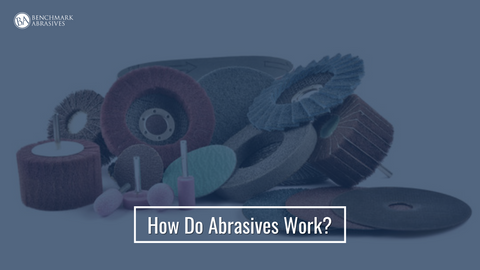
How Do Abrasives Work?

An abrasive is a substance with a specific hardness and density that allows for the processing of other substances by being removed. For instance, polishing a surface is one of the most popular abrasive procedures. Several other uses are also possible.
Abrasives can be classified according to hardness, grain size, and abrasive substance. Each factor impacts the outcome. To get the intended outcome, selecting the proper abrasives is crucial.
What Materials Are Abrasives Made Of?
Abrasives can be natural or artificial. Its hardness level serves as the primary defining characteristic. Legend says two materials can abrade one another when in contact. Special scales measure hardness (Knopp, Mohs, etc).
Diamond is the toughest abrasive substance known in nature. Some materials, like silicon carbide, corundum, and zirconium, can be naturally occurring or man-made. They are quite near diamond hardness but do not match it.
Abrasive creation requires adhesive support. The most common supports are canvas or paper. The abrasives are then fixed using resin or adhesive. This is how abrasive tools are created. Examples include abrasive paper strips, paper sheets, and more. A few more complex processes require industrial machinery to make complex instruments like discs and flap wheels.
How And For What Purposes Are Abrasives Used?
Abrasives are used in industrial processing. They are crucial in the automotive and metallurgical industries. Abrasives allow the production of many everyday items. Consider the car's bodywork if you can. The metal connecting area develops burrs due to the welding process used to assemble a car. Removal of welding burrs involves abrasive compounds.
As a result, both amateurs and experts utilize bonded and coated abrasives to perform specific tasks. Carpenters and finishers use abrasives to sand and polish parquet surfaces. Also, artisans often employ abrasives to produce furniture or works of art. Abrasives help artists cut and shape stainless steel. You can produce incredible works of art with the right tools. Abrasives are the most effective tool for polishing these pieces. The abrasives make it easy to give final products a flawless polish and create a glossy or matte surface, depending on your preferences.
Abrasives: Size, Grain, And Form
There are a variety of discs, wheels, cutters, and other types of files because different bonded abrasives tools correspond with different processing types. They vary mostly in shape, size, and grain.
Working on a surface requires selecting the proper abrasive form. The ideal abrasives should be used to get the intended outcome. On flat surfaces, for instance, you can use abrasive discs that are both flat and conical. The second enables you to operate on a wider surface while maintaining more precision. The first gives more aggressive abrasion on a narrow surface. Cup-shaped abrasives are recommended while working on corners or curved surfaces.
The amount of cleaning and the pattern created depends on the abrasives' grit thickness. Generally, abrasives with grain sizes of 8 to 16 are fairly coarse. They are extremely beneficial for adding deep patterns to the surface. Abrasives with a grain size of 20 to 40 are suitable for a wide range of general and specific uses. Last but not least, fine grain abrasives with grain sizes of 120 and higher are mostly used for finishing.
Also, they come in various sizes so that you may match them to your instrument and the task at hand.



































































